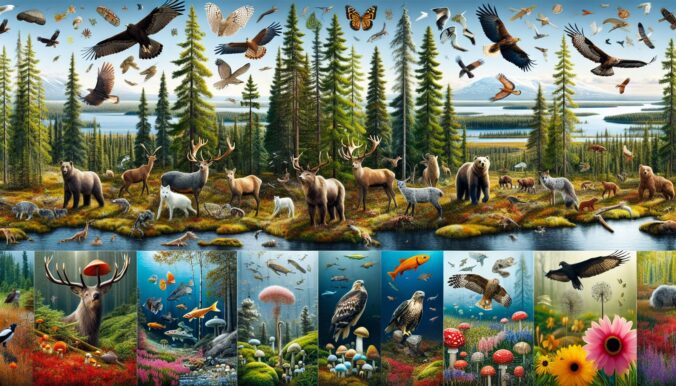Finland, known for its stunning landscapes and vast forests, is also home to a rich and diverse array of plant and animal species. From the northern tundra to the southern coastal plains, Finland’s unique geography and climate have created a thriving ecosystem that supports a wide range of biodiversity.
One of the key factors contributing to Finland’s biological diversity is its varied landscape. The country is home to thousands of lakes, rivers, and bogs, as well as extensive forests and wetlands. These diverse habitats provide a home for a wide variety of plant and animal species, from migratory birds to rare orchids.
In the northern regions of Finland, the tundra landscape is home to species adapted to the harsh conditions, such as reindeer, Arctic foxes, and snowy owls. The Arctic Circle runs through the northern part of Finland, making it a prime location for observing unique Arctic species.
In the central and southern parts of Finland, the landscape changes to dense forests and fertile farmland, creating a different set of habitats for wildlife. Finland’s forests are home to a variety of species, including bears, wolves, lynx, and capercaillie birds. The country’s wetlands and coastal areas provide a habitat for waterfowl, such as swans, geese, and ducks.
One of the most iconic species in Finland is the Saimaa ringed seal, a rare subspecies of ringed seal that is found only in Lake Saimaa. With a population of around 400 individuals, the Saimaa ringed seal is one of the most endangered seal species in the world. Conservation efforts are underway to protect this unique species and ensure its survival in the wild.
In addition to its terrestrial and freshwater biodiversity, Finland also boasts a rich marine ecosystem along its coastlines. The Gulf of Bothnia, the Baltic Sea, and the Gulf of Finland are home to a variety of marine species, including seals, sea eagles, and salmon. The coastal areas of Finland are important breeding grounds for many seabird species, such as terns, gulls, and cormorants.
Despite its relatively small size, Finland is home to a surprisingly large number of plant species, with over 1,400 native vascular plants recorded in the country. The Finnish flora includes a diverse range of species, from Arctic-alpine plants in the north to boreal forest species in the south. Finland’s national parks and nature reserves are important conservation areas for rare and endangered plant species.
Conservation efforts in Finland are focused on protecting and preserving the country’s biodiversity for future generations. The Finnish government has established a network of national parks, nature reserves, and protected areas to safeguard critical habitats and species. In addition, environmental education programs and research initiatives are helping to raise awareness about the importance of biodiversity conservation.
In conclusion, Finland’s biological diversity is a testament to the country’s rich natural heritage. From the Arctic tundra to the Baltic Sea, Finland’s diverse landscapes support a wide range of plant and animal species, making it a haven for nature enthusiasts and wildlife lovers alike. By valuing and conserving its biodiversity, Finland is ensuring that this natural treasure will be preserved for generations to come.

